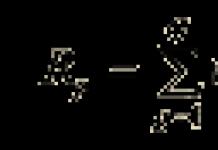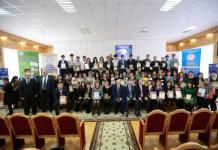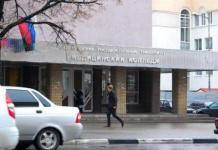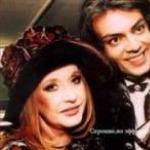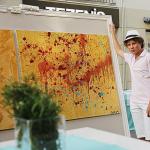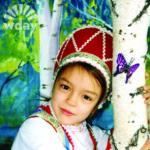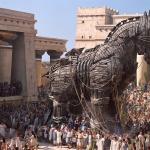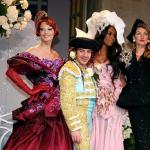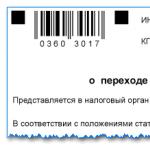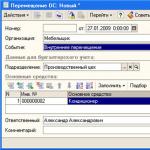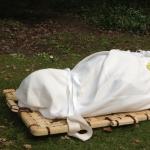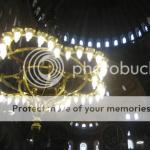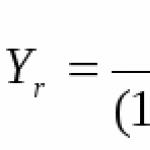Belgorod State National Research University- one of the oldest universities in Belgorod, the largest university in the Belgorod region.
Encyclopedic YouTube
1 / 5
✪ Film about National Research University "BelSU"
✪ Join us! Open Day at the National Research University "BelSU"
✪ Presentation film about National Research University "BelSU"
✪ Film about National Research University "BelSU"
✪ Institute of Economics National Research University "BelSU"
Subtitles
Story
In September 1876 In the provincial city of Belgorod, by order of the Ministry of Public Education of the Russian Empire, a teacher's institute was opened, the ninth in Russia.
June 4 1919 it became the Belgorod Pedagogical Institute, and in 1920 the Belgorod Institute of Public Education.
IN 1923 a decision was made to transform it into a pedagogical technical school.
IN 1939 The technical school again became the Belgorod Teachers' Institute.
IN 1941 The institute temporarily ceased its activities due to the outbreak of the Great Patriotic War. In 1944, when the Nazi invaders were expelled from the territory of the USSR, the institute resumed its work in the city of Stary Oskol, since Belgorod was destroyed.
21st of June 1954 The Belgorod State Teachers' Institute was reorganized into the Belgorod State Pedagogical Institute.
IN 1957 The university returns to Belgorod and will be located in a building on the street. Communist (today it is the building of the socio-theological faculty, Preobrazhenskaya St., 78).
IN 1966 The institute is being transferred to a new educational complex on the street. Zhdanova (Studencheskaya St., 14).
IN 1994 Belgorod State Pedagogical Institute was transformed into a pedagogical university.
In July 1996, according to the Decree of the President of the Russian Federation, the university becomes Belgorod State University.
The logo of the National Research University "BelSU" includes the emblem of the university and the name of the university in Russian and English.
University today
National Research University "BelSU" is a university with a developed infrastructure: 22 academic buildings, seven student dormitories, a Youth Cultural Center, the Temple of the Archangel Gabriel, the Nezhegol health complex, the National Research University "BelSU" clinic, an equestrian school, the Svetlana Khorkina Educational and Sports Complex, the sports complex " Burevestnik", a pharmacy with production, catering facilities, the BelSU High Technologies technology park with a business incubator, a library, a museum complex, a botanical garden and other departments allow students and teachers to realize themselves in various fields of activity. In the property complex of the National Research University "BelSU" there are in permanent use 22 land plots with a total area of 261.86 hectares, 57 buildings, premises and structures with a total area of 240,774 sq.m., including educational and laboratory areas of 175,569 sq.m.
Today, 23 thousand students from all regions of Russia and 80 countries of the world study at BelSU. The university offers 255 areas of training, 349 educational programs. 3 educational programs have the European quality mark EUR-ACE® (Accreditation of European Engineering Programs).
At the National Research University "BelSU" there are 17 councils for the defense of doctoral and master's theses. At the Youth Cultural Center of the National Research University "BelSU" there are 17 student amateur art groups. The university has 9 museums (museum of history of the National Research University "BelSU"; criminology, zoological, forensic medical examination, history faculty, pedagogical faculty, international faculty, N. Strakhov library-museum, geological and mineralogical).
There is a youth media holding at the university, which combines the editorial offices of the youth supplement to the newspaper “Vesti BelGU” “Nota Bene”, radio “WHITE GOOSE”, television “TUT”. The student portal of the National Research University "BelSU" is operational.
Ratings
In 2017, BelSU took the position 76-100 in one of the main world rankings - the Shanghai Global Ranking of Academic Subjects (ARWU) in the subject category - "Metallurgy" in the "Physical Sciences" section. The university immediately became one of four Russian universities included in the TOP 100 of this ranking. “Metallurgy” is one of 52 subject categories, up to 500 universities are ranked in it, but only 200 were included in the final ranking. In addition to the National Research University BelSU, this included MISIS, Tomsk State University, Ufa Aviation Technical University and Moscow State University. The best universities are determined based on five criteria: scientific productivity, citation index, international cooperation, number of publications in the best journals, availability of international awards and prizes. A total of 1,409 universities around the world made it into the final rankings. 12 Russian universities were included in this ranking in 2017 for the first time. Among them is the National Research University BelSU.
In 2016, BelSU took 19th position among 238 Russian universities in the National University Ranking (NRU) of the Interfax International Information Group, 17th place in the “Research” area and 21st place in the “Educational Activities” area.
In 2017, according to the results of the VIII annual National University Ranking (NRU) of the International Information Group "Interfax", BelSU entered the TOP 20 best universities in Russia, taking 19th position among 265 leading universities in Russia.
In the Expert RA ranking in 2016, the university was ranked 59th place and 37th place among the best universities in Russia with a high reputation in the field of “Economic and management areas”. In 2017, BelSU retained its 59th position in this ranking.
Faculties and institutes of the National Research University "BelSU"
BelSU is a multidisciplinary scientific and educational complex, including 7 institutes and 4 faculties, a Medical College and 1 branch.
– Pedagogical Institute:
Faculty of Physical Education
Faculty of Preschool, Primary and Special Education
Faculty of History and Philology
Faculty of Mathematics and Science Education
Faculty of Foreign Languages
Psychology faculty
– Law Institute
– Medical Institute:
Medical College
Center for Additional Professional Medical and Pharmaceutical Education
– Institute of Intercultural Communication and International Relations:
Preparatory Faculty
- Institute of Management:
Graduate School of Management
– Institute of Economics
– Institute of Engineering Technologies and Natural Sciences
– Faculty of Mining and Environmental Management
– Faculty of Journalism
– Faculty of Social Theology
– Faculty of Secondary Vocational Education
BelSU Medical College
The BelSU Medical College, one of the oldest colleges in Russia, dates back to 1932, when a medical college was opened in Belgorod by a resolution of the Council of People's Commissars. It was located in a pre-revolutionary merchant's house on the site of a modern building [[[Wikipedia:Links to sources| source not specified 1983 days]]] . In 1935, the technical school was reorganized into a medical assistant and midwifery school. In 1954, by order of the USSR Minister of Health, the paramedic-midwife school was transformed into a medical school. In 1992, the school received the status of a medical college. In 1997, the college became a structural division of Belgorod State University. In 2017, the BelSU Medical College celebrated its 85th anniversary.
Students are trained in the following areas: “General Medicine”, “Midwifery”, “Nursing”, “Preventive Dentistry”, “Orthopedic Dentistry”, “Pharmacy”, “Laboratory Diagnostics”, “Medical Massage”. https://upload.wikimedia.org/wikipedia/commons/a/a0/%D0%9C%D0%B5%D0%B4%D0%B8%D1%86%D0%B8%D0%BD%D1%81 %D0%BA%D0%B8%D0%B9_%D0%BA%D0%BE%D0%BB%D0%BB%D0%B5%D0%B4%D0%B6_%D0%9D%D0%98%D0 %A3_%C2%AB%D0%91%D0%B5%D0%BB%D0%93%D0%A3%C2%BB.jpg
Branch
The Stary Oskol branch of the National Research University of Belgorod State University is located in the city of Stary Oskol, Belgorod region. He was the successor of the Stary Oskol Teachers' Institute (1866-1917), the Stary Oskol Pedagogical Institute (1917-1941), the Stary Oskol Pedagogical University (1941-1954), and the Stary Oskol Pedagogical Institute (1954-1999).
Scientific and innovative activities
The most important area of activity of BelSU is science. The university has created a powerful research and innovation infrastructure. This 55 research centers and laboratories, including 2 centers for the collective use of scientific equipment; Engineering Center "Pharmaceutical and Medical Industry"; Regional Microbiological Center; Technopark "High Technologies BelSU" with a business incubator; Center for Preclinical and Clinical Research. 45 small innovative enterprises have been created. The scientific departments of BelSU employ scientists who returned to Russia from Japan, Germany, and Poland.
University scientists conduct fundamental and applied research in 54 scientific areas: including physics, mathematics, IT technologies, photonics, mechatronics, materials science and nanotechnology, radiation physics, biotechnology and microbiology, chemistry, geology and mining, ecology, geography , geoecology, biology, medicine, pharmacy, pharmacology, molecular genetics, genomic selection, economics, law, history, linguistics, philology, journalism, theology, cultural studies, political science, sociology and social technologies, management, psychology, pedagogy, etc., and also in the field of interdisciplinary research.
In partnership with high-tech companies, BelSU carries out developments in the field of technical vision systems, IT technologies, biocompatible coatings for use in medicine, technologies for strengthening critical parts made of aluminum, magnesium and titanium alloys, high vacuum equipment and others.
Over the past 10 years, the National Research University "BelSU" has implemented more than 5,000 research projects, including 5 projects within the framework of Decree of the Government of the Russian Federation No. 218, the annual volume of research and development work has increased by 2 times, the volume of contractual work – 4 times. Over the past three years, the total volume of R&D performed at the university amounted to about 3 billion rubles.
The international cooperation
National Research University "BelSU" ranks 7th in Russia in terms of the number of foreign students; more than 2,500 undergraduate and graduate students from 80 countries study here.
Being the base university of the Shanghai Cooperation Organization University since 2009, BelSU develops current scientific areas. In 2017, five areas are being implemented: “Nanotechnology”; "Regional Studies"; "Ecology"; "Economy"; "Pedagogy".
In 2015, the IX week of education of the SCO member states “Education without borders” was held on the basis of the BelSU National Research University. In 2016–2017, the university hosted International Youth Forums of SCO universities.
BelSU is included in the number of universities participating in the Presidential program for the promotion and dissemination of the Russian language in the Ibero-American region.
Currently, BelSU cooperates within the framework of bilateral agreements with 160 foreign universities and scientific organizations in Germany, the USA, Italy, Finland, China, Ukraine, Belarus and other countries. There are 18 joint educational programs with leading universities in Europe and the Asia-Pacific region, 10 of them provide for obtaining two diplomas. As part of academic exchange programs, students study at foreign partner universities (Netherlands, Germany, France, Serbia, Poland, China, Kazakhstan, Belarus, Armenia). Specialist and master's degree programs are taught in English.
National Research University "BelSU" - Erasmus+ program participant with universities in the Netherlands, Germany and Bulgaria. Since 2016, BelSU has received the right to issue a pan-European diploma supplement, Diploma Supplemen, which ensures recognition of the level of education and qualifications of BelSU graduates by potential foreign educational institutions and employers. This is an official document developed by the European Commission, the Council of Europe and UNESCO.
The university implements joint research programs with leading foreign universities and research centers. Foreign teaching staff teach at the university. Scientists from the National Research University "BelSU" conduct scientific and teaching activities abroad.
Scientific Library named after N. N. Strakhov
The Scientific Library named after N. N. Strakhov is one of the oldest university libraries in the Belgorod region. The history of the library began with the opening of the Teachers' Institute in 1876.
The library is the central library of the university's Corporate Library System. Today, the University's Corporate Library System contains more than 1.26 million items. The service system includes 10 reading rooms (including 3 rooms with open access to the collection), 8 subscriptions. In the reading rooms, automated workstations have been organized for people with disabilities and people with disabilities.
Since 2002, the Scientific Library has been a member of the Russian Library Association (RBA) Russian Library Association.
Since 2003, the library has been a member of the Non-Profit Partnership “Association of Regional Library Consortia” (ARBICON). In 2008, the Belgorod Declaration on Open Access to Scientific Knowledge and Cultural Heritage was adopted. The Belgorod Declaration stands on a par with other international initiatives of open access to scientific and humanitarian knowledge (Budapest Initiative, Berlin Declaration, etc.).
In 2009, an open-access electronic archive of scientific publications by university scientists was created - the third among Russian universities.
In 2009, the library-museum of N. N. Strakhov, a Russian philosopher, literary critic, translator and publisher, librarian of the Imperial Public Library, a native of Belgorod, was opened.
In 2010, with the financial support of a grant from the President of the Russian Federation, an electronic collection “Archive of the Era” was formed, reflecting the activities of N. N. Strakhov.
In 2011, following the implementation of a grant from the President of the Russian Federation in the field of culture and art, by decision of the academic council of the university, the library was named after Nikolai Nikolaevich Strakhov.
In 2013, the open access electronic archive was assigned by the ISSN International Center an international standard number for periodicals (ISSN: 2310-7529) as a continuously updated database among the first six Russian academic open access repositories.
In 2014, an electronic reading room of the Presidential Library named after B.N. was opened. Yeltsin.
In 2016, the Belgorod Declaration on open access to scientific knowledge and cultural heritage in the scientific and educational space was developed for Russian partner universities. Currently, the Declaration has been signed by the heads of 23 Russian universities.
On the basis of the scientific literature reading room, a Center for Intercultural Communication has been created, which helps meet the information needs of students on issues of humanistic interethnic relations, ethnic tolerance, and countering extremist activities.
The library carries out humanitarian and educational activities aimed at the spiritual, moral, civil, patriotic, cultural and aesthetic education of young people, legal education, and the formation of attitudes toward a healthy lifestyle among readers.
Library-Museum N.N. Strakhova
In 2009, on the initiative of scientists from the Belgorod State National Research University and with the active participation of the university’s Scientific Library, the N.N. Library-Museum was opened. Strakhov - Russian philosopher, literary critic, translator and publisher, librarian of the Imperial Public Library, native of Belgorod.
In 2010, with the financial support of a grant from the President of the Russian Federation, an electronic collection “Archive of the Era” was formed, reflecting the activities of N.N. Strakhov. The collection consists of modern and rare editions of works by N.N. Strakhov, his contemporaries, the works of domestic and foreign researchers of the philosopher’s work.
In 2011, following the implementation of a grant from the President of the Russian Federation in the field of culture and art, by decision of the academic council of the National Research University "BelSU", the Scientific Library was named after Nikolai Nikolaevich Strakhov.
In 2011, the Scientific Library named after. N.N. Strakhov National Research University "BelSU" together with Professor E.A. Antonov prepared and published the bibliographic index “Nikolai Nikolaevich Strakhov: philosopher, literary critic, translator” (about 800 sources).
In 2016, with the participation of Professor E.A. Antonov, professor P.A. Olkhov and Associate Professor E.N. Motovnikova published the second, expanded, edition of the index “Nikolai Nikolaevich Strakhov: philosopher, literary critic, translator.” Today this is the most complete list of published works of the outstanding Russian philosopher and literature about him (over 900 sources).
National Research University "BelSU" is the initiator of regular scientific conferences and Strakhov readings dedicated to the work of N.N. Strakhov. University scientists have been actively engaged in research in the field of studying the heritage of N.N. for twenty years. Strakhov. Recognition of the relevance and form of effective support for research issues related to the legacy of N.N. Strakhov, were successfully implemented grants from the Russian Humanitarian Science Foundation (RGNF).
Cooperation has been established with the national libraries of Russia (RSL, RNL), libraries of the Institute of World Literature (IMLI RAS), Institute of Philosophy (IP RAS), scientific libraries of St. Petersburg State University, University of Brno (Czech Republic), Suzhou University (China).
On the basis of the library-museum, the literary and philosophical club “On Wednesdays at Strakhov’s”, created on the initiative of scientists from the National Research University BelSU, functions; excursions, exhibitions and other cultural and educational events are held. Students, teachers, and cultural figures take an active part in the activities of the club. Currently, work is underway to organize the card index of N.N.’s personal library. Strakhov.
The library-museum is located in a historical building of the 19th century. In 2016, a memorial plaque dedicated to N.N. was placed on the building. Strakhov (sculptor - Honored Artist of the Russian Federation A.A. Shishkov).
In 2017, the library-museum of N.N. was reconstructed. Strakhov, the opening of the apartment-museum of N.N. took place. Strakhov. The library-museum acquired the appearance of N.N.’s St. Petersburg apartment. Strakhov.
Currently, the library-museum of N.N. Strakhova is the only internationally recognized research and information and bibliographic center for studying the heritage of N.N. in Russia. Strakhov, with a unique storage of electronic documents and memorial items.
Equestrian school
The equestrian school is a structural subdivision of the National Research University "BelSU". Her activities are inextricably linked with the development of equestrian sports in the Belgorod region, with the popularization of horse riding, with work aimed at implementing programs for equestrian tourism, cultural leisure, rehabilitation and social adaptation of disabled children, health promotion, development and formation of a comprehensively and harmoniously developed personality . Today, the complex has two modern stables for 40 horses, garages for vehicles and warehouses with a total area of 700 m², and a hangar for storing feed. KSH's pets, horses - graceful beauties of different breeds: Trakehner, Hanoverian, Tersk, thoroughbred riding, Arabian, Oryol and Russian trotting, Ukrainian, Akhal-Teke, Russian riding and crossbreeds - work in tandem with both beginners and already professional riders. , gyms, gymnasiums, table tennis, choreography and aerobics rooms. On the site on the street. The sports complex “Burevestnik” is located on Student Street.
Polyclinic of National Research University "BelSU"
The polyclinic of the National Research University "BelSU" is a modern educational platform, which is the medical, practical and research base of the university. The structure of the clinic includes departments for general (family) practice and physiotherapy, a modern diagnostic center, a bacteriological laboratory and a unique department for clinical trials of drugs.
The clinic is equipped with modern diagnostic and laboratory equipment. The computed tomography department performs diagnostics of all human organs and systems.
The clinic's specialists provide medical services in 15 therapeutic and surgical specialties.
The clinic provides services to students, employees, veterans of the National Research University "BelSU" and residents of the Belgorod region. Since 2015, the clinic has had a day hospital department.
Since 2005, pharmaceutical services have been provided by the BelSU Pharmacy complex. This structural unit of the Medical Institute is a developed educational and production base for training specialists in the field of Pharmacy. Scientific research is carried out at the pharmacy.
Since 2015, a microbiological laboratory has been operating, which has no analogues in the Central Black Earth Region. 60 thousand people a year visit the clinic.
Health complex "Nezhegol"
Founded in 2004. Situated on six hectares of magnificent mixed forest.
Complex infrastructure: guest houses, cafes, gazebos for relaxation, sports and children's playgrounds, bicycle paths and tennis courts, a football field.
Major university events are held here: International Summer Language School, International School of Project Management “Pegasus”, School of Trade Union Activists.
Botanical Garden of National Research University "BelSU"
Founded in 1999 by order of the Governor of the Belgorod Region E. S. Savchenko.
Located in the South-Western district of Belgorod on an area of over 70 hectares. In 2013, the botanical garden of the National Research University "BelSU" was included in the database of the Ministry of Education and Science as a unique infrastructure object of the Russian Federation.
Over 2,700 species and varieties of plants have been collected on the territory of the botanical garden, including endemic, relict, rare and endangered species of the Red and Green Books of Russia.
Since 2015, the Botanical Garden has been implementing a joint project of the National Research University “BelSU” and the Belgorod State Philharmonic “Non-Random Meetings”. The best performers of classical, folk, and jazz music perform at the concert venue, excursions are conducted on an electric car, and visitors are offered aromatic tea from herbs collected in the garden.
Museums of the National Research University "BelSU"
The university has 9 museums: the Museum of History of the National Research University "BelSU"; criminology, zoological, forensic medical examination, history faculty, pedagogical faculty, international faculty, N. Strakhov library-museum, geological and mineralogical.
Museum of History of National Research University "BelSU"
The Museum of History of Belgorod State National Research University was created on October 22, 2002.
The funds of the University History Museum include 1,290 units of the main fund and over 3,000 units of the scientific and auxiliary fund. Among the unique exhibits are a medal for a student of the Belgorod Teachers' Institute "Worthy" (1880s), a student card from 1908, certificates of graduates from different years, rare printed publications of the early 20th century, reprints of educational publications of the directors of the Belgorod Teachers' Institute, household items of the late 19th century - beginning of the 20th century.
In 2012, the Museum of History of the National Research University "BelSU" was awarded a 1st degree diploma based on the results of the regional review-competition of museums "Let's Preserve and Increase."
Geological and Mineralogical Museum
Created March 2, 2015. The museum has five halls and a storage facility. The exhibition features 150 display cases with samples of minerals, rocks, fossils, soil profiles, and two interactive kiosks with a large-format TV panel. The museum has created a library with more than 400 items (books, CDs). The museum's holdings include over one and a half thousand exhibits. Here are samples of the fossil resources of the Kursk Magnetic Anomaly, Russia and the world. Thematic exhibitions are dedicated to the Crimean geological site, the glow of minerals under the influence of UV rays; exhibits from the collection of the Terra mineralia museum of the Freiberg Mining Academy are presented in a specialized photo exhibition.
Constant replenishment of the collection occurs thanks to the participation of employees of mining and processing enterprises of the Belgorod and Kursk regions, through their own expeditionary fees, purchases and exchange of exhibits with geological museums in Russia and abroad, gifts from teachers, students, graduates of the National Research University "BelSU", and individuals.
Over 230 samples of minerals and ores, including the rare mineral tumasite and samples of valuable copper-nickel ores, which include precious metals - silver, gold, platinum and platinoids, were donated to the museum by the chief geologist of the Norilsk Mining and Metallurgical Combine, Vladimir Efimovich Kurilov.
Zoo museum
Founded in 1978. The museum carries out educational work with students, excursion and educational activities, scientific work to study the fauna of the Belgorod region and create a stock collection of animals.
The museum's funds contain exhibits from field practices, collections donated by Moscow State University. M.V. Lomonosov and the University. A. I. Herzen; unique exhibits of animals from different parts of the globe (200 stuffed birds and 50 stuffed mammals). The museum's exposition includes collections of vertebrate and invertebrate animals and numbers one thousand specimens.
Among the museum's exhibits are stuffed birds made by the famous Russian taxidermist F. K. Lorenz at the beginning of the 20th century.
Spiritual and educational center named after Metropolitan Macarius (Bulgakov)
In 2016, based Faculty of Social Theology named after Metropolitan of Moscow and Kolomna Macarius (Bulgakov) The Spiritual and Educational Center named after Metropolitan Macarius (Bulgakov) of Moscow and Kolomna was opened. It was created with the blessing of Metropolitan John of Belgorod and Stary Oskol in honor of the 200th anniversary of the birth of Metropolitan Macarius. Conferences at the regional, federal and international levels are held here. The permanent museum exhibition of the center presents monuments to the life and work of Metropolitan Macarius, paintings and sculptures. The volunteer organization “At the Call of the Heart”, the religious and philosophical club “Logos” and the “Young Family Club” operate on the basis of the Spiritual and Educational Center.
Church-chapel in the name of the Holy Martyr Eugenia of Rome
The temple-chapel in the name of the Holy Martyr Eugenia of Rome was recreated in 2016 on the basis of the socio-theological faculty named after Metropolitan of Moscow and Kolomna Macarius (Bulgakov)
The revival of the church-chapel of the Holy Martyr Eugenia of Rome is the restoration of historical justice. The gymnasium house church was built in the building of the men's gymnasium named after Duke Alfred of Edinburgh at the end of the 19th century with donations from Belgorod philanthropist Sofia Arsenievna Mustyats. In 1886, services began in the temple, which lasted for more than thirty years until the ban that followed the revolutionary events of 1917. The unique Belgorod church resumed activities on its original territory on the 130th anniversary of the first service with the blessing of Metropolitan John of Belgorod and Stary Oskol.
The institute in the city of Belgorod annually takes hundreds of students from the region and surrounding regions under its wing and every year graduates professionals with secondary medical education.
What specialties does the institution prepare for, how long does the training last, and under what conditions is admission possible? We will talk about this and much more in the article.
A little about the institution
The BelSU Institute celebrated its 85th anniversary in May 2017. During this time, it has established itself as an educational institution providing high-quality professional education. It is not for nothing that over more than 8 decades, more than 30,000 highly qualified medical specialists have graduated from the walls of the medical college.

Chronology
The National Research University BelSU Medical College began its existence in 1932 as a medical college. At that time, the enrollment of students was small - only 90 people. And after 2 years, in 1934, the first graduation occurred: nurses were trained.
A year later, in 1935, there was another graduation, only this time for paramedics and obstetricians. Immediately after this, in the same year, the medical school slightly changed its status. It became a paramedic-midwifery school. Enrollment of students was also limited: 270 people for the paramedic department and 20 people for obstetrics.
In 1941, a sudden disaster caused the school to have an early graduation, after which all students were sent to the front.
In 1954, the paramedic-midwife school was transformed into a medical school by order of the Minister of Health of the Soviet Union.
In 1979, the current medical college of the National Research University "BelSU" received a new five-story building, which was fully equipped for conducting medical classes. In addition, students had access to a sports and reading room.
In 1992, the school officially became a medical college. And after 5 years, in 1997, the institution became a division of Belgorod University.
Today, the medical college of National Research University "BelSU" is the best in the region. The management is carried out by the director of the institution, Evgeniy Nikolaevich Krikun - Doctor of Medical Sciences, Professor.
Specialties
The following specialties are offered at the Medical College of National Research University "BelSU".
Based on 9 classes:
- Midwifery. After graduation, the specialty "obstetrician" is awarded. Duration of training - 3 years and 10 months.
- diploma - "medical laboratory technician". The training lasts 3 years and 10 months.
- Pharmacy. Upon completion, the qualification “pharmacist” is awarded. Duration of training - 3 years and 10 months.
- Nursing. The qualification "brother" is awarded. Training - 3 years and 10 months.
Based on 11 classes:
- Medical business. Specialty - "paramedic". Duration of training - 3 years 10 months.
- Midwifery with the awarded qualification "obstetrician". The study lasts 2 years and 10 months.
- Laboratory diagnostics. Diploma specialty "medical laboratory technician". The duration of study depends on the form of study: 2.10 or 3.4 years.
- Orthopedic dentistry. Qualification "dental technician". Two forms of training, on which the training time depends.
- Profession Two forms of study with terms of 1 year and 10 months, 2 years and 5 months.
- Pharmacy, awarded to the specialty "pharmacist". Training - 2 years 10 months and 3 years 4 months (depending on the form).
- Nursing. Upon graduation, the qualification "brother" is awarded." Two forms of study for periods of 2.10 and 3.10 years.
- Medical massage. The training is designed for people with visual impairments. Upon completion, the qualification “massage nurse/brother” is awarded. The training will take 2 years and 10 months.

Nurse
Particular attention should be paid to the specialty "nurse". After completing full-time or evening studies, a specialist can work in any medical institution in the country, as well as abroad. You can choose from both public medical organizations and private ones.
In addition, in the process of performing their professional duties, these medical workers can acquire skills in a narrower specialty:
- surgery;
- operating unit;
- intensive care worker;
- sanatorium nurse;
- medical office;
- fitness club health worker;
- in the field of cosmetology.
At the "nurse/brother" department you can be trained to become a nurse. The Belgorod-Starooskol diocese gave the go-ahead for this preparation. The entire course of compulsory education for nurses is the same as for nurses, with only one difference: an additional course is being studied on the basics of spiritual mercy. Upon completion of all training, nurses can work:
- in hospices;
- in nursing homes;
- in orphanages;
- in nursing homes.
Admission conditions
Admission to the Medical College of National Research University "BelSU" requires compliance with certain conditions. Thus, the applicant must provide the following package of documents:
- An application written personally by the applicant.
- 4 photographs measuring 3 by 4.
- Original and 2 copies of passport, citizenship.
- Certificate of secondary general education or secondary vocational education. Original and 2 copies.
- Original medical certificate (086-U), which should indicate contraindications or lack thereof for training.
- Vaccination certificate.
Payment at Belgorod Medical College takes place according to the state co-financing program. That is, part of the total amount is paid by the state, and the rest - directly by the student. But the program is valid only for full-time study. So, for example, a course in the general medicine department costs 62,700 rubles: the student contributes 51,000 rubles, and the state contributes 11,700 rubles.
The most expensive specialty is “pharmacy” - 85,800 rubles based on grades 9 and 11. For all other specialties the cost is the same - 62,700 rubles.
But before becoming a college student, an applicant must pass an entrance test.
- Interview - takes place at most departments.
- Creative exam in the form of modeling. It is carried out upon admission to an “orthopedic dentist”.
Even before the start of submitting documents, the Belgorod Medical College holds “Open Days”, where future applicants are told in detail about the directions, the conditions of study and all the delights of student life for college students.
In 2018, Open Days are scheduled for:
- February 17;
- March 24.
But the work of the selection committee, when it is possible to submit documents, will begin on June 20, 2018.
Education
Education at the Medical College of the National Research University "BelSU" is carried out in two forms:
- full-time;
- evening.
Enrollment of applicants takes place on the basis of graduating classes: 9 and 11.

Practice
Practice for the future is no less important than theory. Therefore, students at the Medical College of Belgorod State National Research University reinforce their acquired knowledge by performing practical tasks in office settings, and also undergo internships in hospitals and clinics.
The medical college cooperates on a contractual basis with 64 medical and pharmaceutical organizations located in the city and region. Medical students do their internships in these organizations. Some of these are:
- OGBUZ "City Clinical Hospital No. 1".
- OGBUZ "City Hospital No. 2".
- OGBUZ "City Children's Hospital".
- OGBUZ "Belgorod Regional Clinical Hospital of St. Joasaph."
- OGBUZ "Children's Regional Clinical Hospital".
In addition, at clinical sites in Belgorod there are laboratories and special rooms where potential doctors are trained. In addition to teachers, employees of medical institutions are directly involved in the practice of students.
The practical learning process is carried out on modern models that closely simulate the human body.

Teachers
The teachers of the Medical College of the National Research University "BelSU" are not only current employees, but also honorary professors and teachers who stood at the origins of the college.
Today the staff of teachers includes:
- Ph.D;
- 4 PhD candidates;
- 2 teachers awarded the title “Honored Teacher of the Russian Federation”;
- 22 employees with the title “Honored Worker of Secondary Vocational Education of the Russian Federation”;
- 2 employees who can boast of the title “Excellence in Healthcare”;
- 2 employees with the title “Honorary Worker of the National Research University “BelSU”.

More than 70% of teachers at the Belgorod Medical College have the highest or 1st category of assigned qualifications. Vast experience and a desire to share existing knowledge are what further distinguishes the teaching staff of the Belgorod medical educational institution.
Placement address
The medical college of the National Research University "BelSU" is located at the address: Belgorod region, Belgorod, Popova street, 24/45.
The educational institution is open from 9 am to 6 pm, break from 13:00 to 14:00. Closed: Saturday and Sunday.
Faculty of Medicine
Institute of Postgraduate Medical Education Specialty: anesthesiology and resuscitation
- Head cycle of resuscitation and IT, extreme medicine as part of the student department of surgical diseases of BelSU, doctor of medical sciences, prof. Grigorenko A.P. (part-time worker)
- Head course of anesthesiology and resuscitation of postgraduate education - MD, prof. Grigorenko A.P.
- Head educational part: a) as part of the student cycle - Khomyakov V.S.
b) as part of a graduate education - Ph.D. Koziy M.N.
- Number of employees: a) in the student cycle 3 people -
assistant - 1 tbsp. teacher - 1 professor - 1
b) as part of the graduate education - 5 people. assistants - 3 tbsp. teacher - 1 professor - 1
- Anesthesiology is taught in the 3rd year by staff
Department of General Surgery. Reanimatology and IT, extreme
Medicine is taught at the Faculty of Medicine in the 5th year, in
in the future (in the next 2-3 years) we will teach at
Pharmaceutical, Pediatric and Faculty of Higher Education
nursing education. - In total, there are 126 students in the 5th year, 13 are trained per year
groups - on average from 8 to 11 students in one group. - Classroom load for the resuscitation cycle: Lectures - 8 hours
(duration of one lecture is 2 academic hours); etc.
classes 30 hours (6 days of 5 hours), credit - 31.8 hours.
Extracurricular load - individual work - 78 hours,
checking medical records - 126 hours. - A total of 4 lectures on resuscitation and IT, duration 2
academic hours. - Lecture topics for students:
1) Cardiopulmonary resuscitation. Decay and restoration of cardiac functions. Etiology and pathogenesis
cessation of cardiac activity. Diagnosis of clinical death. Algorithm of actions in case of clinical death.
2) Resuscitation and pain relief for severe mechanical injuries (resuscitation and IT for shock of various etiologies) at the prehospital stage: Epidemiology. Etiology and pathogenesis. Classification. IT shock states.
3) Principles of IT for acute poisoning. Antidote therapy for acute poisoning. Symptomatic antidotes. Toxicotropic antidotes. Toxicokinetic antidotes. Antitoxic immunocorrectors.
4) Intensive therapy and resuscitation for acute respiratory failure caused by laryngospasm, laryngostenosis, status asthmaticus, pulmonary edema, obstructive bronchitis, pulmonary distress syndrome in adults.
- Topics of practical classes:
- IT and resuscitation for acute respiratory failure caused by laryngospasm, laryngostenosis, status asthmaticus, severe pneumonia, pulmonary edema, obstructive bronchitis, pulmonary distress syndrome in adults.
- Resuscitation and IT for shock of various etiologies (traumatic, burn, hemorrhagic, anaphylactic, cardiogenic, endotoxic, etc.). Fainting, collapse, coma.
- Integrated methods of resuscitation and IT for clinical death and terminal conditions. Resuscitation and IT in case of accidents: asphyxia, drowning, electric shock, heat stroke, bites of poisonous snakes and insects.
- Principles of IT acute poisoning. Antidote therapy for acute poisoning. Symptomatic antidotes. Toxicotropic antidotes. Toxicokinetic antidotes. Antitoxic immunocorrectors..
- Resuscitation and IT for acute hepatic-renal failure. Extracorporeal detoxification methods. Forced diuresis.
- Water-electrolyte and acid-base disturbances in critical conditions. Principles of IT dyshydria. Methods for correcting acidosis and alkalosis. Principles of infusion-transfusion therapy.
- Electives - not held
- Number of clinical residents studying on the course - 4
person. - There is no postgraduate course.
- Scientific focus of the course - Diagnostics, pathogenesis,
intensive therapy for severe forms of gestosis, severe polytrauma,
acute traumatic brain injury, purulent-septic diseases.


